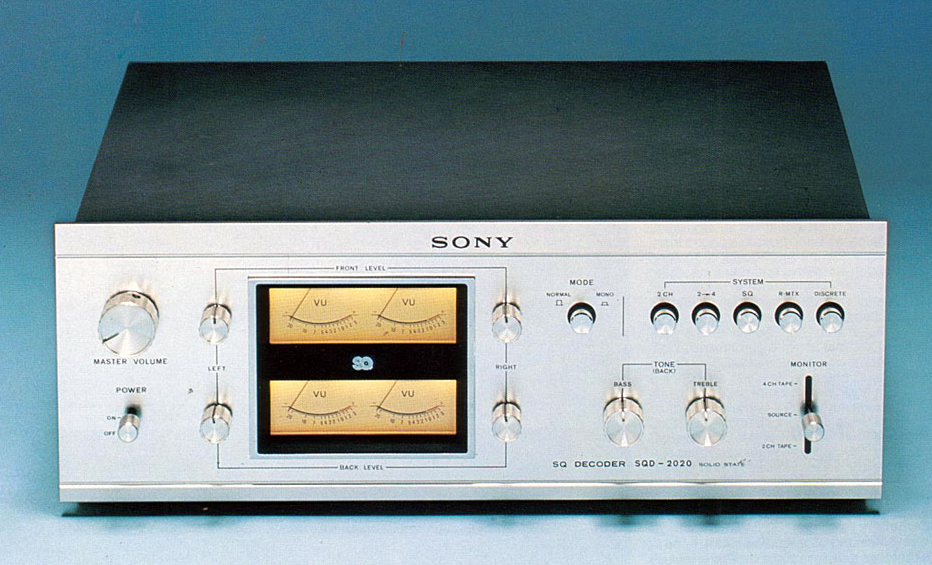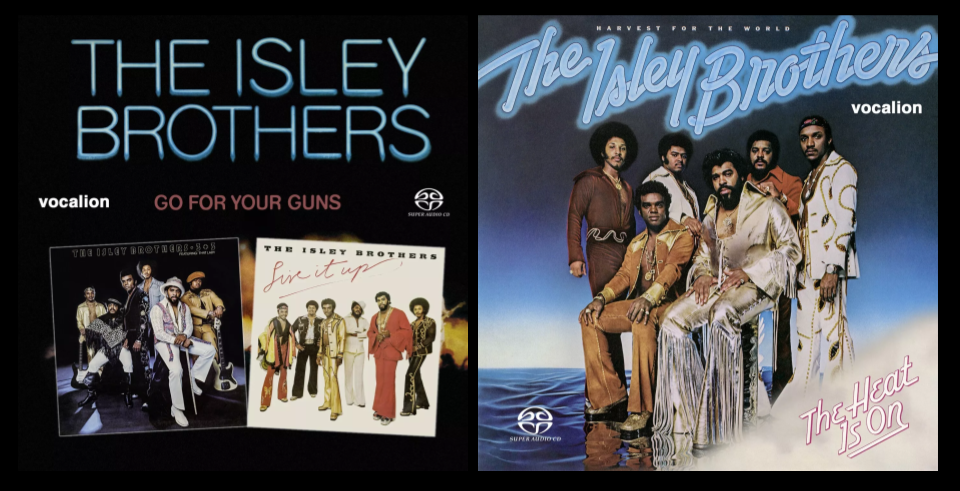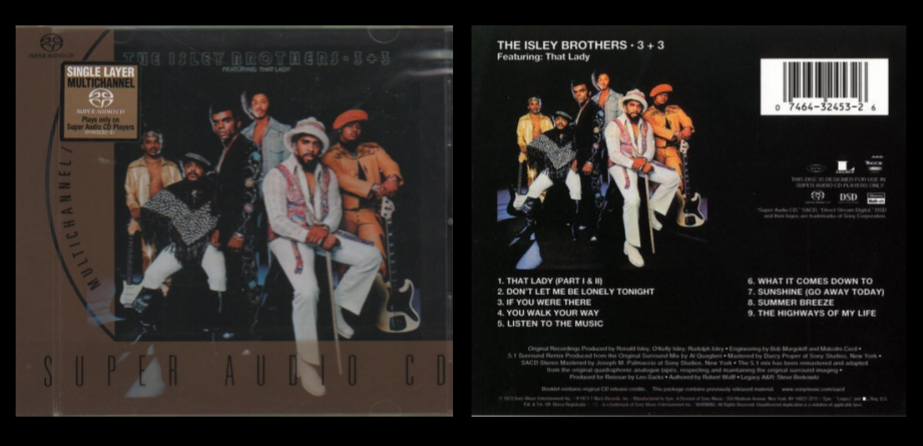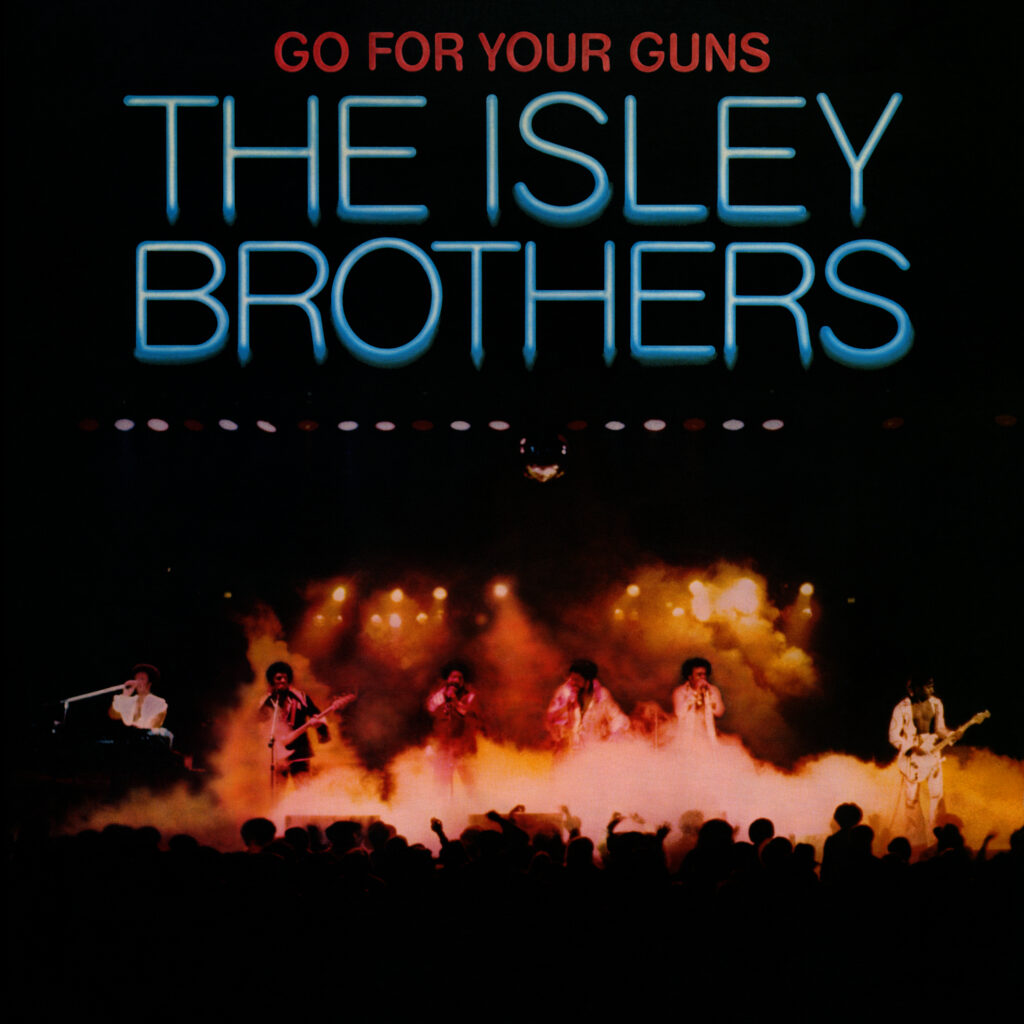Though they’re best known for a string of chart-topping albums released between 1973 and 1983, The Isley Brothers’ musical legacy spans an incredible seven decades. Throughout their storied career, the band sold millions of records and earned numerous accolades–including an induction to the Rock ‘n’ Roll Hall of Fame in 1992 and the Grammy Lifetime Achievement Award in 2014.
Initially a vocal trio consisting of brothers Ronald, O’Kelly, and Rudolph, The Isleys released their debut album Shout! in November 1959. They spent the next several years recording cover songs for other labels–including a top-20 version of "Twist and Shout" for Atlantic Records–before starting one of their own, T-Neck Records, in 1964.
For 1971's Givin' It Back, their ninth studio album, the band added three new members to its lineup–younger brothers Ernie (lead guitar, drums) and Marvin (bass), plus Rudolph's brother-in-law Chris Jasper on keyboards–completing their transformation into a fully-fledged R&B/funk ensemble. These younger members also contributed to 1972's Brother Brother Brother and 1973's double live LP The Isleys Live.
August 1973's aptly-titled 3+3 cleverly takes its name from this reinvented version of the band, which saw the original trio of Ronald, O’Kelly, and Rudolph augmented by younger siblings Ernie, Marvin, and Chris. Half funked-up covers (including hits like James Taylor’s "Don't Let Me Be Lonely Tonight” and Seals & Crofts “Summer Breeze”) and half original material–most notably a reworked version of their 1964 composition “That Lady”–3+3 became the group’s biggest hit record to date, peaking at #8 on the US album charts.

Engineered by Malcolm Cecil and Robert Margouleff–the same team that famously worked on Stevie Wonder's legendary mid-70s run of classic albums–3+3 was also notably The Isley Brothers' first album to receive a four-channel quadraphonic mix.
During the 1970s, CBS Records were among the biggest proponents of quadraphonic sound. Since T-Neck's releases were distributed by CBS/Epic at this time, The Isley Brothers’ albums became natural candidates for the burgeoning new format. Between 1974 and 1977, four of their biggest titles were issued on quadraphonic LP: 3+3 (1973), Live It Up (1974), Harvest For The World (1976), and Go For Your Guns (1977).
CBS’ quadraphonic LPs utilized their proprietary “SQ” matrix process, meaning that listeners would need to purchase an external decoding device (such as the Sony SQD-2020 unit pictured below) that extracted the rear channel information upon playback. Unfortunately this recovery process was imperfect, leaving bleed between the front and rear channels that would destabilize the three-dimensional soundscape.
The quadraphonic mixes of 3+3, Live It Up, and Go For Your Guns were also made available on 8-track cartridge. Unlike the LPs, these 'quad-8' tapes offered listeners perfect front-to-rear channel separation–but they suffered from all the usual maladies of that format, including poor high-frequency response and speed warble.


Now, in 2024, all of The Isley Brothers’ quadraphonic releases are available to listeners in the highest-possible quality due to the efforts of mastering engineer Michael J. Dutton and Dutton Vocalion.
Vocalion is a UK-based audiophile label that’s been reissuing quadraphonic music–primarily titles from the CBS (now Sony) archives–on hybrid multichannel SACD since 2016. They’ve now issued well over one hundred albums across a variety of genres and labels, even going so far as to pack multiple albums on a single disc.
The Isley Brothers titles are spread across a pair of two-disc sets currently available through the Dutton-Vocalion website and select online resellers. The first set, released in October 2023, couples 1975’s The Heat Is On with 1976’s Harvest For The World. The second set, released in June 2024, rounds up all three remaining albums–1973’s 3+3, 1974’s Live It Up, and 1977’s Go For Your Guns.
Though The Heat Is On did not receive a quadraphonic LP or tape release, it turned out that a four-channel mix of the album was indeed prepared but mysteriously left unissued. The Dutton-Vocalion SACD marks the first official release of that mix. Additionally–since Harvest For The World was issued only on SQ LP with no tape counterpart–the SACD finally offers listeners an opportunity to hear the discrete four-channel master, which is a revelation in comparison to the decoded LP.

Fans may recall that 3+3 was previously issued on single-layer multichannel SACD by Sony way back in 2001. Though touted as 5.1 surround sound, the multichannel program on that disc is actually derived from the ‘70s quad master. In fact, the fine print on the back of the disc reads “The 5.1 mix has been remastered and adapted from the original quadraphonic analog tapes, respecting and maintaining the original surround imaging.”
To my ears, the new SACD–which features new brand-new digital transfers of both the stereo and quad master tapes, all remastered by Michael J. Dutton–offers a considerable sonic improvement over the prior multichannel release. Though they claim to have “respect[ed] and maintain[ed] the original surround imaging,” the producers of the 2001 edition seem to have detrimentally altered the balance of the quad mix by lowering the volume of the rear channels.
As such, key elements panned to the back of the room like the short guitar solos and backing vocals (“he can’t…run his life”) throughout “Sunshine” sound somewhat recessed unless you’re seated very close to the rear speakers. The D-V release brings the rears back up to their intended level, and also restores the missing back-channel information at the very beginning of “What It Comes Down” (the rear speakers are silent for the first 15 seconds of this song on the 2001 SACD, surely as a result of an unintentional mastering error).

The quadraphonic version of 3+3, mixed by Malcom Cecil and Robert Margouleff at The Record Plant studio in Los Angeles, frequently makes interesting use of diagonal pairings. Ernie Isley’s guitar solos in “That Lady” oscillate between the front left and rear right speakers, while the acoustic intro to “Don’t Let Be Lonely Tonight” appears in both the front right and rear left channels. Ronald Isley’s lead vocals stay anchored to the center front position, with the harmonies often relocated behind the listener to spine-tingling effect.
The Isleys continued working with Cecil and Margouleff on their follow-up to 3+3, September 1974’s Live It Up. For this album, the group opted to include only one cover–a slow-burn version of Todd Rundgren’s “Hello It’s Me.” Live It Up ultimately proved to be another huge seller, peaking at #14 on the US charts.
This time, the quadraphonic mix was created by Kent Duncan at the Kendun Recorders studio in Burbank, California. This mix is considerably different in approach from 3+3’s, as the drum kit in the title track seems to emanate from all around the listener. Jasper’s keys and the background vocal chants again seem to come primarily from the rear, but they’re not completely isolated.
Acoustic guitars fill up the back speakers for “Need A Little Taste Of Love,” along with the background vocals. Though the lead guitar seems locked to the front stage for most of the track, Ernie’s big solo towards the end seems to expand and fill up the entire room. The epic closer “Ain’t I Been Good To You” is especially improved on the SACD, free of the inner-groove distortion that plagued my LP pressing.

For me, the standout entry in this set is definitely 1977’s Go For Your Guns. The quadraphonic LP and tape editions of that album are extremely rare, as it was one of the very last pop/rock four-channel releases from CBS.
The man behind the mix is Larry Keyes, a CBS staff engineer who remixed dozens of albums in quadraphonic for the label throughout the decade. Many of Keyes’ quad mixes have been reissued on SACD in recent years, including those for high-profile pop/rock acts like Santana, Loggins & Messina, Earth Wind & Fire, Ten Years After, and Johnnie Taylor. He even worked on four-channel versions of some classical titles for CBS' Masterworks imprint, including a 1973 recording of Holst's The Planets conducted by Leonard Bernstein.
The quad mix of Go For Your Guns is decidedly more nuanced than the other two albums, to the point where it almost feels like a modern 5.1 presentation. The core rhythm section and lead vocal are always positioned upfront, while additional elements like backing vocals, percussion, keyboards, rhythm guitars, and reverb returns (such as the big vocal delay in “Voyage To Atlantis”) have been spread out into the rear speakers.
Congas hover directly behind the listener’s head for “Tell Me When You Need It Again,” with dueling the rhythm guitars hard-panned into the back corners. “Climbin’ Up The Ladder” is especially fun in quad, as the double-tracked lead vocals have been split between the front and rear channels. Ernie’s leads in “Voyage To Atlantis” soar from the front stage, while the chorused rhythm guitars and background vocals (“come back to you…”) percolate from the rear.

Overall, it's difficult to overstate the value of this release. The 2001 3+3 SACD is well-known in audiophile communities as one of the rarest and most desirable multichannel discs out there (I paid close to $50 USD for my copy back in 2018), so have it available once again–sounding better than the prior release and bundled with two more of the band’s quad albums–for around $30 USD is an absolutely insane bargain.
If ‘70s-era R&B/funk is up your alley, then this set is an absolute no-brainer. That genre is particularly well-represented in D-V's catalog, most notably by their SACD editions of various Philadelphia International releases from the mid-70s (The O'Jays, Harold Melvin & The Blue Notes, MFSB). The quadraphonic mixes on those discs are every bit as impressive as the ones done for The Isley Brothers.
Even if '70s soul isn't to your taste, I’d reckon there’s something for everyone in D-V’s varied repertoire–whether you’re a fan of Rock (R.E.O Speedwagon, Ted Nugent, Rick Derringer), Jazz Fusion (Herbie Hancock, Weather Report), Country (BW Stevenson, Charlie Rich), or even Broadway cast recordings (A Chorus Line, Company). Bottom line: if you're into surround/immersive music, you owe it to yourself to check out their catalog.
Support IAA by purchasing the 3+3, Live It Up & Go For Your Guns and The Heat Is On & Harvest for the World 2-SACD sets!

